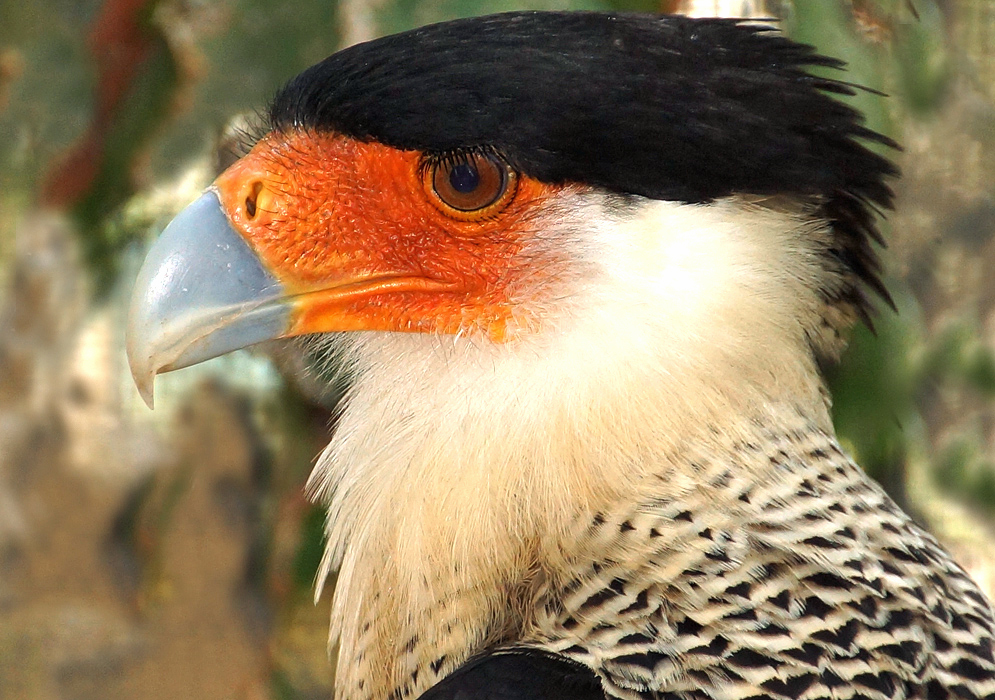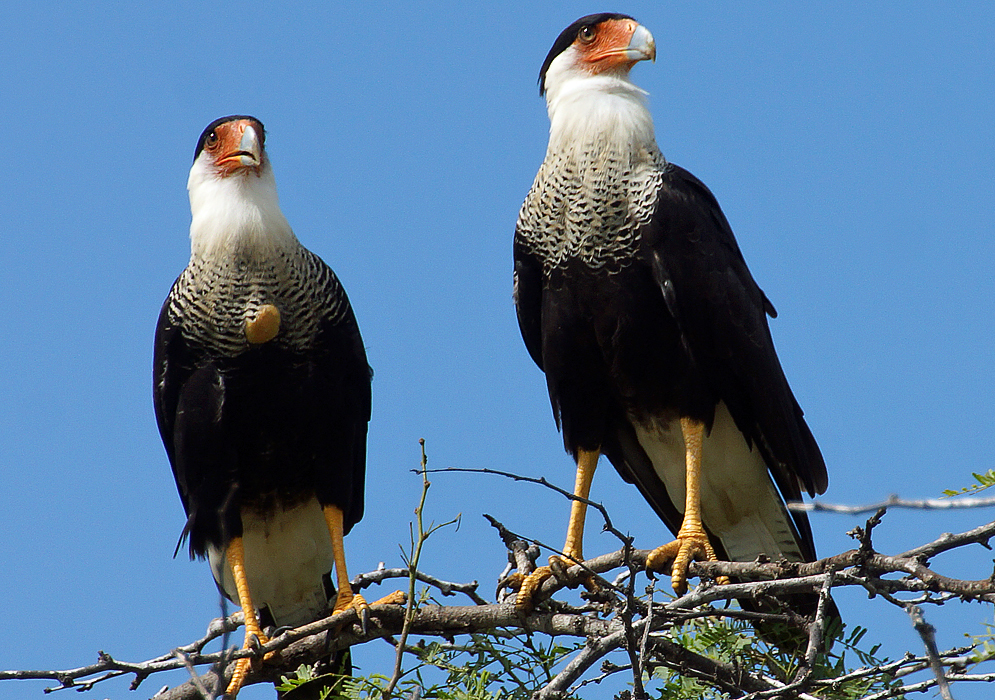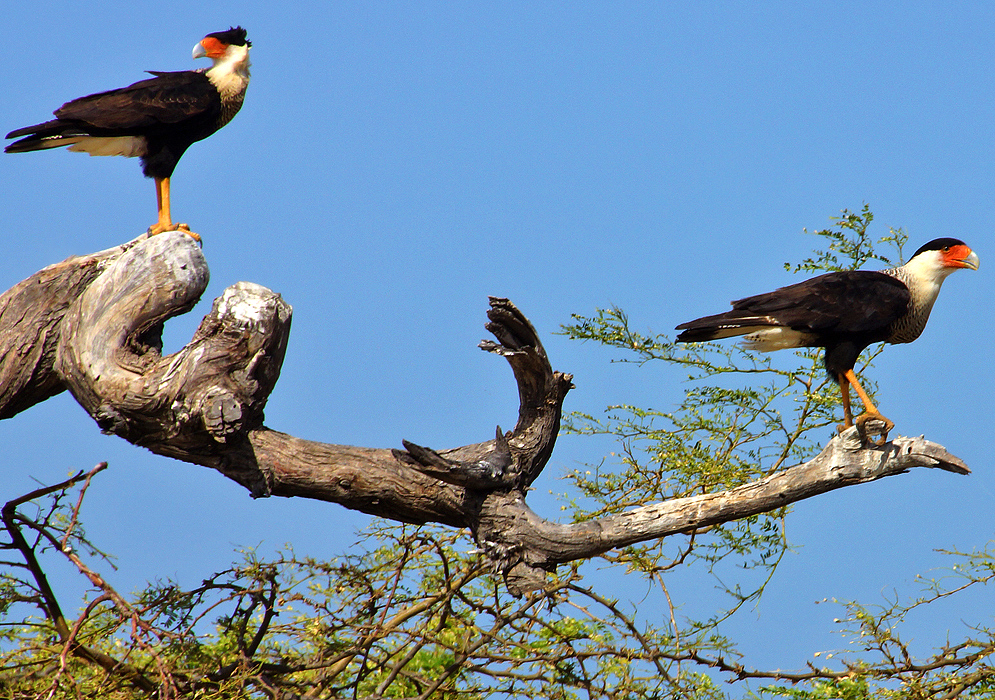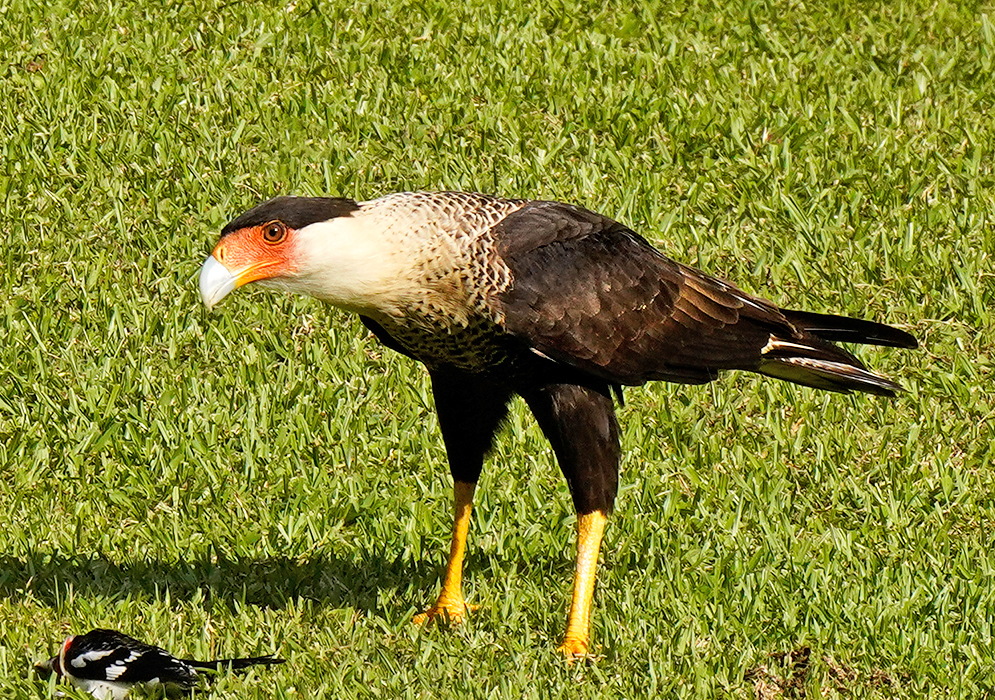This post has 11 Simple Fields-fields attached. Show fields.

The Crested Caracara, is a bird of prey found across a broad range extending from Central to South America. It inhabits the Mexican-American border region, ranging from Baja California to Eastern Texas, and south to Panama. Isolated populations exist in Cuba, the Isle of Pines, Central Florida, and Louisiana. Avoiding the Andean highlands and dense forests like the Amazon, they are largely confined to open sections along major rivers and prefer open areas with sparse vegetation such as grasslands, shrubland, pastures, and river edges, sometimes venturing into marshes and cultivated areas. The Crested Caracara, measuring 20–26 inches in length with a wingspan of 47–52 inches and weighing 2.0–3.5 pounds, stands out with its dark brownish cap, belly, thighs, wings, and tail tip contrasted with whitish-buff auriculars, throat, nape, chest, neck, mantle, back, upper tail coverts, crissum, and basal part of the tail. This raptor is opportunistic, feeding mainly on carrion but also preying on insects, fish, reptiles, amphibians, birds, and mammals. Resourceful in foraging, it wades in shallow waters for fish, digs up turtle eggs, and turns over debris to uncover insects. Crested Caracaras also exploit disturbances like fires or farming operations, seizing fleeing animals or scavenging those that have perished. Unlike most raptors, they pursue their prey on the ground until they overtake it. Breeding occurs in open areas from grasslands to scrubby regions, with nests built by both males and females using stems, twigs, and vines to create a bulky structure with a shallow bowl. These nests, approximately 2 feet across, are often reused and refurbished, making them larger over time. These birds are territorial, maintaining year-round territories and forming long-term bonds with mates, often preening each other in a behavior known as allopreening. They return to the same nesting sites year after year. The global breeding population of the Crested Caracara is estimated at 2.2 million, indicating a species of low conservation concern. Photographed in Guajira, Colombia.







